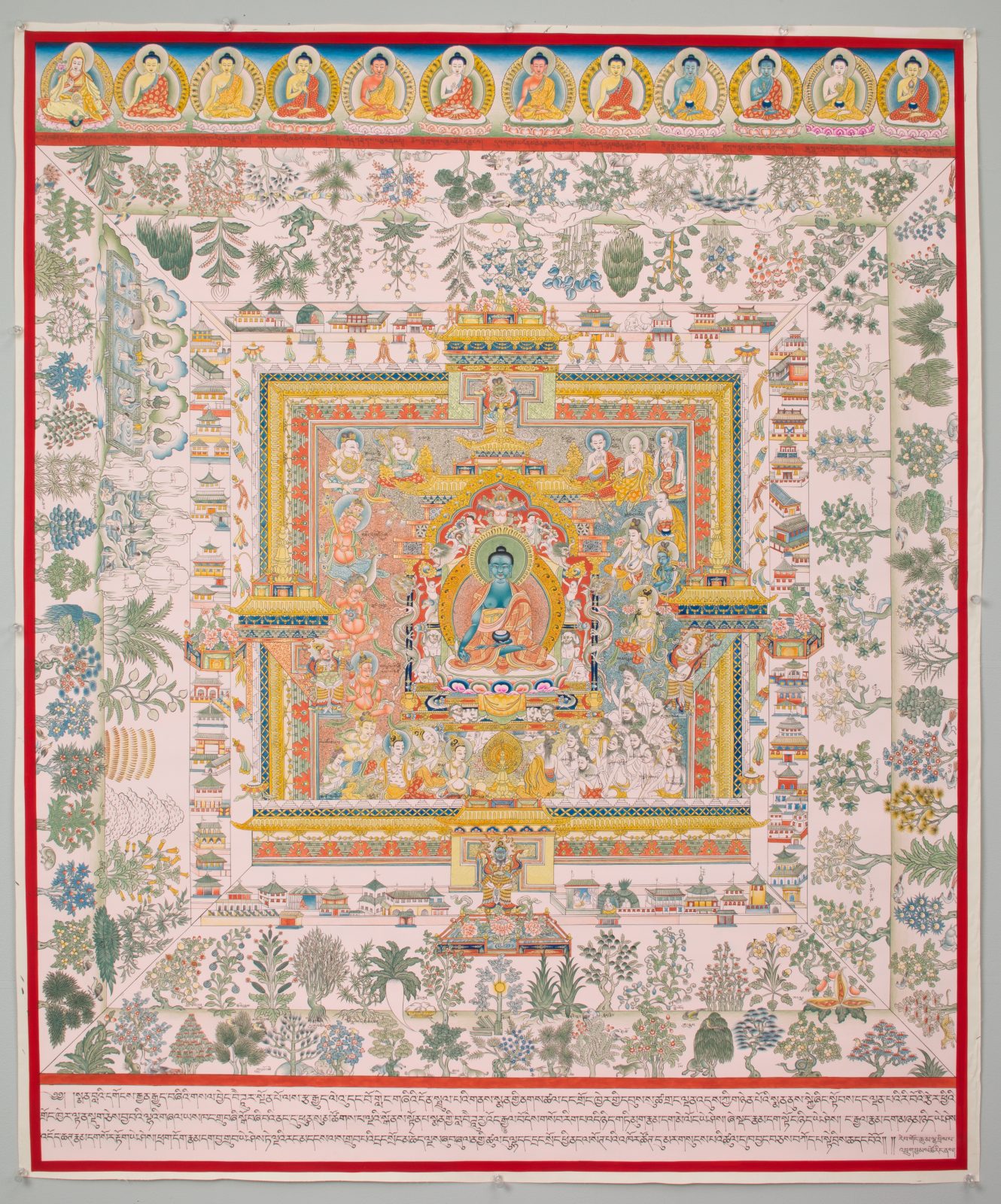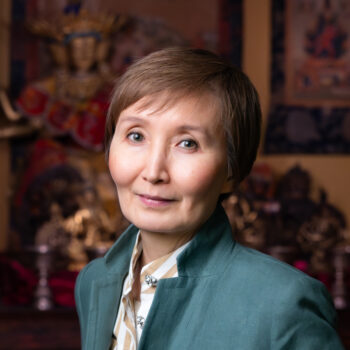
Medicine Buddha Palace (Copy of first painting from the set of the Tibetan Medical Paintings from Mentsikhang Lhasa); Rebgong county, Qinghai Province, China; 2012-2013; Pigments on cloth; Rubin Museum of Himalayan Art; SC2013.6

Medicine Buddha Palace (Copy of first painting from the set of the Tibetan Medical Paintings from Mentsikhang Lhasa); Rebgong county, Qinghai Province, China; 2012-2013; Pigments on cloth; Rubin Museum of Himalayan Art; SC2013.6
This painting depicts a specific event: the Medicine Buddha, seated in the center of his mandala palace, explaining the science of healing to four groups of disciples—gods, saints, Buddhists, and non-Buddhists. Yet the painting can also be viewed as a metaphor for the inclusive, holistic nature of Tibetan medical knowledge and practice—representing the entire physical world, where everything can be used for healing, as the story of the medical student Jivaka tells. His master asked him to find a substance or a plant that could not be used as medicine. After a long search, Jivaka returned empty-handed, but his teacher congratulated him and said his training was complete—now he knew that there is no substance on earth without healing properties.
Explore the interactive below to learn about the different figures and ingredients depicted in this painting. At the end of the interactive there are additional video resources to watch about this painting and Tibetan medicine.
Medicine Buddha Palace (Copy of first painting from the set of the Tibetan Medical Paintings from Mentsikhang Lhasa); Rebgong county, Qinghai Province, China; 2012-2013; Pigments on cloth; 74 3/4 × 58 1/4 × 2 in.; Rubin Museum of Himalayan Art; SC2013.6

Elena Pakhoutova is senior curator, Himalayan art, at the Rubin Museum of Himalayan Art and holds a PhD in Asian art history from the University of Virginia. She has curated several exhibitions at the Rubin, including Death Is Not the End (2023), The Power of Intention: Reinventing the (Prayer) Wheel (2019), and The Second Buddha: Master of Time (2018). More →
Get the latest news and stories from the Rubin, plus occasional information on how to support our work.